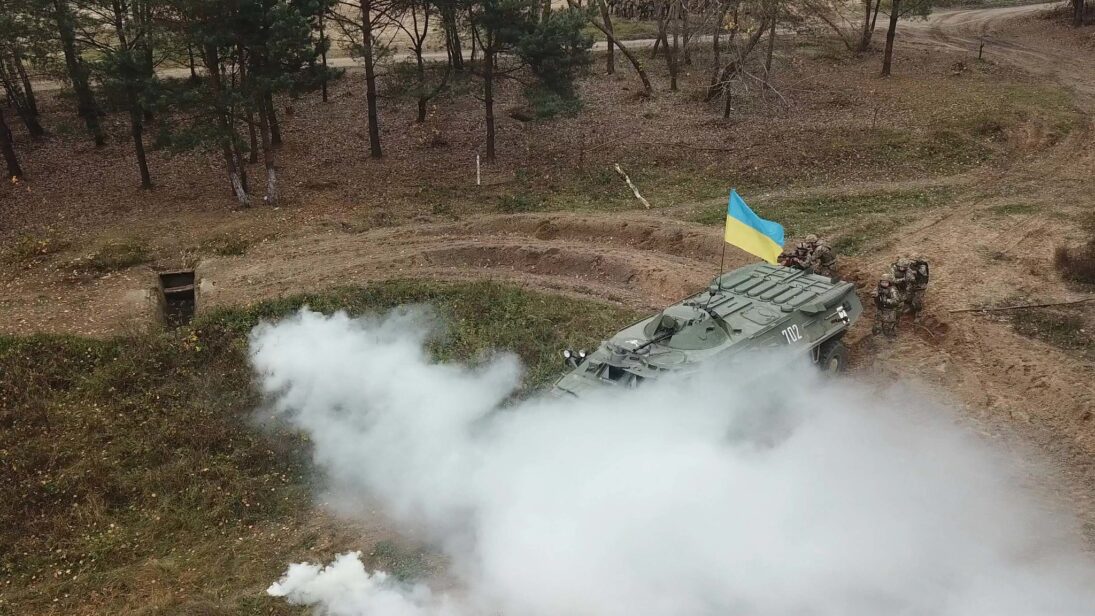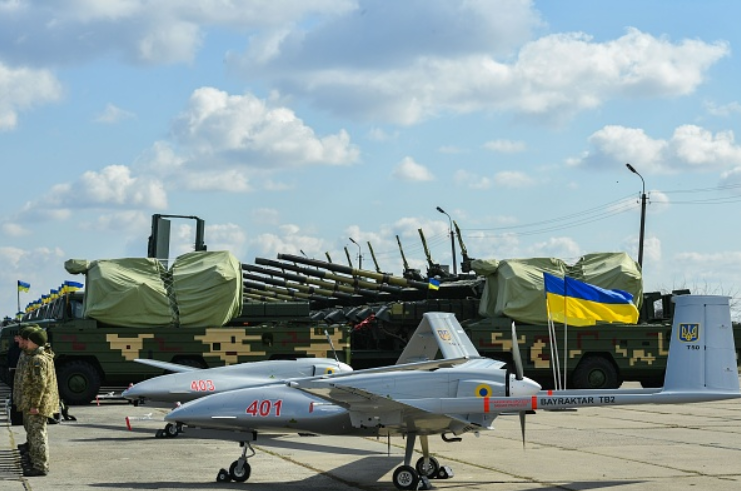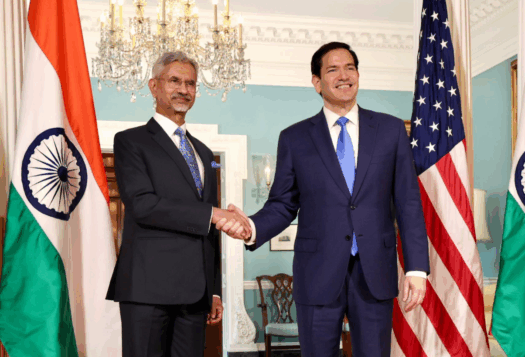
The transformation in military affairs is rooted in the analyses of previous armed conflicts—each involving a different kind of revolution that trimmed flawed traditional war-patterns and identified new operational concepts and technologies for integration in military doctrines. The ongoing Russia-Ukraine conflict is also being thoroughly examined to draw lessons about the contours of modern war, help delineate prospective challenges, and build requisite civilian and military capabilities. While a series of debates have surfaced about countries reevaluating their strategies and capabilities in light of the Russo-Ukrainian war, this article focuses on the lesson that India and Pakistan’s strategic community and decision makers could be mining from this war and reflects on the parallels and contrasts with crises and strategic dynamics in South Asia.
South Asia’s geostrategic landscape is defined by recurrent crises, outright wars, territorial disputes, and mutual mistrust. These challenges are reinforced by triangular India-China-Pakistan strategic dynamics, which has contributed to overlapping threat perceptions and the introduction of multifaceted capabilities. Unlike the Russia-Ukraine scenario, this conflict-prone region is underpinned by nuclear deterrence that has helped diminish each adversary’s war-waging potential and prevent limited military engagements from escalating into all out conventional war. The conventional asymmetry between India and Pakistan has also not been as acute and decisive as the military capability differential between Ukraine and Russia. Despite these differences, substantial lessons can be applied to the trilateral deterrence equation of this region. These lessons can broadly be contextualized as both operational and tactical and aimed at improving operational strategies, cognitive warfare, and military technological developments.
Logistics
The Russian Army’s operations in Ukraine have been severely hampered by floundering logistical support and poor maintenance of military hardware and equipment. Russian supply lines have been sabotaged at several places and are being aggressively targeted by Ukrainian forces. Any future conflict in South Asia is likely to involve several thousand troops, tanks, artillery and mechanized forces being employed by India and Pakistan across hundreds of kilometers of geographically varied and difficult terrain. Pakistan’s north-south geography, however, offers it a natural advantage with shorter supply lines and forward defensive positions close to the border. Pakistan continues to further consolidate its logistics network by improving road connectivity, mechanization, and its hardware.
Pakistan’s forces can also be quickly re-positioned to critical theaters of operation during a conflict. Consequently, India will have to achieve air superiority and conquer air defenses against Pakistan early in a conflict for its IBGs to maneuver unhindered.
On the flip side, India’s Proactive Military Operations/Limited War Doctrines—i.e., Cold Start—was spurred by a desire for quick mobilization, preparation, and employment to deny the adversary the time and space to respond. However, India’s redeployment of its army divisions and Integrated Battle Groups (IBGs) facing Pakistan to the Line of Actual Control (LAC) amidst a military standoff with China means there is now near parity between Indian and Pakistani forces with the latter being able to deploy all its offensive and defensive forces to meet any Indian threat. Pakistan’s forces can also be quickly re-positioned to critical theaters of operation during a conflict. Consequently, India will have to achieve air superiority and conquer air defenses against Pakistan early in a conflict for its IBGs to maneuver unhindered.
Air Defense and UCAVs
Russia’s attack on Ukraine has reinforced the efficacy of strong air defenses and armed or unarmed drones to protect a country’s vital military and civilian assets and deployed forces from an air attack. Although the Ukrainian air force is vastly outmatched by the Russian air force, Russia has been unable to gain control over Ukraine’s skies. The inadequate air patrols by Russian aircraft and helicopters against Ukrainian troops has enabled Ukraine to get into tactically effective attacking positions. Since the opening salvos of war, Ukrainian and Western supplied air defence Systems (i.e. Stinger anti-aircraft missiles) have been inflicting heavy losses on Russian air capability, with claims of Ukrainian forces shooting down helicopters, Unmanned Combat Aerial Vehicle (UCAV) drones and fighter aircrafts including the Russian SU-35. The war has also brought about greater realization of the need for effective short-range air defense against armed drones. The Turkish TB2 UCAV—which is “wreaking havoc” on Russian troops, artillery, tanks, and air defense systems—cannot be effectively detected by long-range defense systems. Likewise, the switchblade armor killing small drone, referred as the Kamikaze, has reportedly been effective against Russian tanks. Conversely, Russians are also using armed drones and helicopter gunships to destroy Ukrainian air defenses, command and control targets, and military hardware and storage and supply sites, in addition to targeting TB2 and other Ukrainian armed drones.

In South Asia, India and Pakistan are likely to continue investing in modern integrated air defense networks to deny enemy air superiority—India’s recently acquired S-400 and Pakistan’s inducted HQ-9P. Given the various types of air defense missile systems, coupled with Airborne Warning and Control Systems (AWACS), Electronic Warfare, Artificial Intelligence, cyber and directed energy weapons, ISR platforms and armed drone capabilities by India and Pakistan, a future conflict is likely to depend on how both countries will use these capabilities in synergy in real time conditions. The war in Ukraine will also incentivize the acquisition of loitering munitions and drone-swarms (intelligent, smaller, low-cost expandable agents)—such as the larger XQ-58 Valkyrie and Gremlins smaller attack drones—in South Asia, particularly for India as China is developing anti-drone capabilities. Likewise, the inferred lesson will require India and Pakistan to deploy short-range air defense systems to protect their ground forces.
Precision Strike/Counter Force Capabilities
Russia’s biggest instrument of attacking Ukrainian military targets are short range ballistic missiles, cruise missiles, standoff weapons, artillery—claims of over 2,000 missile strikes across Ukraine. Yet, Russia has not been able to exploit its advantage in artillery to the desired impact due to its flawed operational strategy, as the Russian Battalion Tactical Groups—which include “artillery, infantry, tanks—and are designed to attack quickly with lot of firepower”—were not supplied with sufficient infantry troops to provide protection in the event of attack. The United States supplied anti-tank guided missiles (ATGM), Javelin, is causing massive blow to the Russian tanks by destroying the tank’s built-in reactive armor that absorbs missile’s impact. Along with 2000 Javelin ATGMs, Ukraine was also aided with 3,600 Next-Generation Light Anti-tank Weapon (NLAW) missiles. Together they are potent to mitigate the damage inflicted by Russian units. Reportedly, Russia has lost almost 650-1,200 tanks and over 3,000 armored vehicles so far including armored personnel carriers and infantry fighting vehicles.
The war in Ukraine will also incentivize the acquisition of loitering munitions and drone-swarms (intelligent, smaller, low-cost expandable agents)…in South Asia, particularly for India as China is developing anti-drone capabilities.
While India has been heavily investing in developing IBGs over the past decade, Pakistan enjoys a clear edge over India in self-propelled artillery which is vital for IBG-based operations—as this supports in continuing the momentum of such operations as well as modern armor and combined arms operations. However, India is expediting its efforts to bridge this gap through building a Rocket Force, and is also pursuing capabilities for Non-Contact Warfare that will derive its strength from its emerging counter-force potential—based on conventionally armed supersonic and hypersonic cruise missile development (BrahMos triad and Nirbhay) and long-range artillery. Thus, a future conventional conflict in South Asia will possibly include large-scale use of smart (guided) artillery at long ranges in support of tanks and infantry to quickly decimate the enemy and achieve decisive results on the battlefield. To this end, both India and Pakistan are actively inducting long-range Rocket Artillery systems (including the Pinaka, A-100, Fatah-1, and the BM-30 Smerch).
Anti-Access/Area Denial Capabilities
The sinking of the Russian Black Sea Fleet’s cruiser Moskva by Ukrainian R-360 Neptune subsonic anti-ship cruise missile, has cast new light on the significance of relatively inexpensive anti-ship Anti-Area Access Denial capabilities (A2/AD) that can be employed to deter and defeat a superior naval force—provided the requisite ISR and target acquisition information is made available. This has generated debate on how Chinese A2/AD and anti-ship ballistic and cruise missiles can keep U.S. aircraft carrier battle groups at bay, or how Taiwan might use such technologies in the event of a conflict with China. While both India and Pakistan have been acquiring and developing similar naval A2/AD capabilities, the former is the largest operator of BrahMos cruise missile that is the primary anti-ship weapon on Indian surface ships. Pakistan has recently developed Harbah subsonic anti-ship cruise missile and is equipping its surface fleet with new YJ-12 supersonic and P-282 hypersonic missiles. Pakistan has also tested the Zarb land based anti-ship missile system which is similar to the Ukrainian Neptune anti-ship missile.
What is lacking in the Russian-Ukrainian conflict is the impact of air power on naval operations and large-scale deployment of surface warships in equal measure as the Ukrainian navy was no match for Russia’s Black Sea Fleet. More notable is the absence of any submarine warfare in this conflict. South Asia is likely to see large-scale naval operations involving surface, submarine, anti-ship and anti-submarine warfare (naval aviation) forces as both India and Pakistan are modernizing and expanding their naval capabilities in all domains, including their sea-based nuclear deterrents.
Doctrine, Strategy, and Combined Arms Operations
In the words of Stephen Biddle, “combined arms tactics impose very high orders of complexity…while effective if implemented properly, they demand high levels of skill from both troops and leaders.” The unexpected substandard performance of Russian forces in the field has raised questions on the Russian military’s morale, training, and leadership. Equally important is the near absence of the effective execution of a Combined Arms Doctrine that could translate Russian numerical predominance in armor, artillery, infantry, helicopters, aircraft, and missiles. In South Asia, India and Pakistan have continued to devise, test, and polish their conventional war-fighting doctrines through numerous exercises involving their respective land, air, and naval forces. These exercises involve various elements of three-services for achieving synergy and optimum utilization of available technologies and capabilities. India and Pakistan also regularly participate in military exercises with friendly countries that help in fine tuning interoperability and greatly assist in identifying the strengths, weaknesses, and opportunities for further growth. This aspect has been lacking for Russia which primarily conducted exercises with China.
Finally, the Russia-Ukraine war shows that even a robust military force and plans may falter if the aggressor underestimates the resolve of a comparatively weaker but determined adversary. Modern warfare is not just a clash of technology and military capabilities, it is also a contest of leadership, tactics, and morale that will determine the outcome of conflict.
Ultimately, the Russia-Ukraine conflict has demonstrated that the outbreak of conventional conflict remains a potent option between states. While past crisis have demonstrated deterrent value of nuclear weapons in preventing vertical escalation, which is likely to be relevant for the foreseeable future, conventional deterrence has gained greater traction in recent years, particularly with India reevaluating its strategies to address a two-front war challenge and “[prepare] itself for long term conventional war-fighting roles”. Like the Russian-Ukraine conflict, a South Asian military conflict, if occurs, can quickly transform into a battle of attrition. Besides this, the key lesson from Russia’s invasion of Ukraine is the need to develop comprehensive and integrated crisis management capabilities by devising a clear-eyed appraisal of military and politico-economic measures that addresses the full-spectrum of crises—before, during, and after conflict. Finally, the Russia-Ukraine war shows that even a robust military force and plans may falter if the aggressor underestimates the resolve of a comparatively weaker but determined adversary. Modern warfare is not just a clash of technology and military capabilities, it is also a contest of leadership, tactics, and morale that will determine the outcome of conflict.
Editor’s Note: This article is part of two-part series examining the impact of the Russia-Ukraine war on India and Pakistan’s military modernization programs and operational planning. Read part one here.
***
Image 1: Ministry of Defense Ukraine via Flickr
Image 2: Press Office of the President of Ukraine/Mykola Lararenko/Handout/Anadolu Agency via Getty Images


